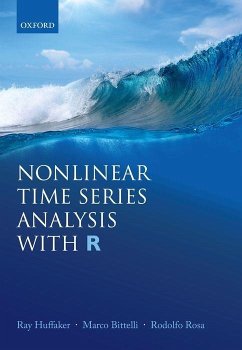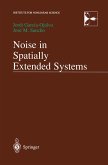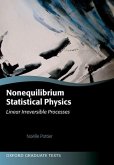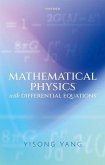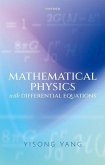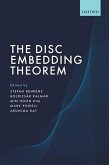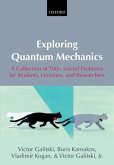Ray Huffaker (Professor, Professor, Agricultural and Biological Eng, Marco Bittelli (Professor, Professor, Department of Agricultural Sc, Rodolfo Rosa (Professor, Professor, Department of Physics and Matte
Nonlinear Time Series Analysis with R
Ray Huffaker (Professor, Professor, Agricultural and Biological Eng, Marco Bittelli (Professor, Professor, Department of Agricultural Sc, Rodolfo Rosa (Professor, Professor, Department of Physics and Matte
Nonlinear Time Series Analysis with R
- Broschiertes Buch
- Merkliste
- Auf die Merkliste
- Bewerten Bewerten
- Teilen
- Produkt teilen
- Produkterinnerung
- Produkterinnerung
A practical guide to emerging empirical techniques allowing practitioners to diagnose whether highly fluctuating and random appearing data are most likely driven by random or deterministic dynamic forces.
Andere Kunden interessierten sich auch für
![Noise in Spatially Extended Systems Noise in Spatially Extended Systems]() Jordi Garcia-OjalvoNoise in Spatially Extended Systems117,99 €
Jordi Garcia-OjalvoNoise in Spatially Extended Systems117,99 €![Hölder Continuous Euler Flows in Three Dimensions with Compact Support in Time Hölder Continuous Euler Flows in Three Dimensions with Compact Support in Time]() Philip IsettHölder Continuous Euler Flows in Three Dimensions with Compact Support in Time86,99 €
Philip IsettHölder Continuous Euler Flows in Three Dimensions with Compact Support in Time86,99 €![Nonequilibrium Statistical Physics: Linear Irreversible Processes Nonequilibrium Statistical Physics: Linear Irreversible Processes]() Noelle PottierNonequilibrium Statistical Physics: Linear Irreversible Processes64,99 €
Noelle PottierNonequilibrium Statistical Physics: Linear Irreversible Processes64,99 €![Mathematical Physics with Differential Equations Mathematical Physics with Differential Equations]() Yisong Yang (Professor of Mathematics, Professor of Mathematics, CoMathematical Physics with Differential Equations38,99 €
Yisong Yang (Professor of Mathematics, Professor of Mathematics, CoMathematical Physics with Differential Equations38,99 €![Mathematical Physics with Differential Equations Mathematical Physics with Differential Equations]() Yisong Yang (Professor of Mathematics, Professor of Mathematics, CoMathematical Physics with Differential Equations96,99 €
Yisong Yang (Professor of Mathematics, Professor of Mathematics, CoMathematical Physics with Differential Equations96,99 €![The Disc Embedding Theorem The Disc Embedding Theorem]() The Disc Embedding Theorem123,99 €
The Disc Embedding Theorem123,99 €![Exploring Quantum Mechanics: A Collection of 700+ Solved Problems for Students, Lecturers, and Researchers Exploring Quantum Mechanics: A Collection of 700+ Solved Problems for Students, Lecturers, and Researchers]() Victor Galitski (Deceased. Former Head of the Theoretical Physics DExploring Quantum Mechanics: A Collection of 700+ Solved Problems for Students, Lecturers, and Researchers90,99 €
Victor Galitski (Deceased. Former Head of the Theoretical Physics DExploring Quantum Mechanics: A Collection of 700+ Solved Problems for Students, Lecturers, and Researchers90,99 €-
-
-
A practical guide to emerging empirical techniques allowing practitioners to diagnose whether highly fluctuating and random appearing data are most likely driven by random or deterministic dynamic forces.
Produktdetails
- Produktdetails
- Verlag: Oxford University Press
- Seitenzahl: 384
- Erscheinungstermin: 15. Dezember 2017
- Englisch
- Abmessung: 247mm x 172mm x 27mm
- Gewicht: 750g
- ISBN-13: 9780198808251
- ISBN-10: 0198808259
- Artikelnr.: 48022500
- Verlag: Oxford University Press
- Seitenzahl: 384
- Erscheinungstermin: 15. Dezember 2017
- Englisch
- Abmessung: 247mm x 172mm x 27mm
- Gewicht: 750g
- ISBN-13: 9780198808251
- ISBN-10: 0198808259
- Artikelnr.: 48022500
Ray Huffaker is a professor in Agricultural and Biological Engineering at the University of Florida. He specializes in nonlinear time series analysis, biological and economic modelling of water and other ecosystem resources, economic dynamics, and natural resource and environmental law. He has taught graduate courses in nonlinear data diagnostics, mathematical optimization techniques, economic dynamics, and micro- and macroeconomic analysis; and undergraduate courses in natural resource and environmental law. He holds bachelor degrees in economics and Italian literature, a Ph.D. in agricultural economics, and a J.D. in law all from the University of California at Davis. Marco Bittelli received the degree in Agricultural Sciences from the University of Bologna, Italy, and a M.S. and a Ph.D. degree in Soil Physics from Washington State University, USA. He spent one year as a postdoctoral scientist in the Physics Department at the University of Heidelberg, Germany. He is associate professor at the University of Bologna, where he teaches soil and environmental physics, hydrological modelling, philosophy of science and scientific methods courses, both at the undergraduate and graduate level. Rodolfo Rosa received a degree in physics in 1968 and in philosophy in 1977. From 1969 to 1992, he was a researcher at the National Research Council-IMM Institute in Bologna. From 1992 to 2014 he was professor at the Faculty of Statistics at the University of Bologna, where he taught courses on Statistics for Experimental Research, Chaos and Complexity, Probability and Stochastic Processes. His research interests include Monte Carlo methods applied to atomic interactions in matter, statistical mechanics, organization of genetic information in coding sequences of DNA, philosophy of science, and chaos theory.
1: Why Study Nonlinear Time Series Analysis?
2: Linear and Nonlinear Dynamic Behavior
3: Phase Space Reconstruction
4: The Features of Chaos
5: Entropy and Surrogate Testing
6: Data Preprocessing
7: Surrogate Data Testing
8: Empirically Detecting Causality
9: Phenomenological Modelling
10: Capstone: Application of NLTS to Real-World Data
11: Extreme Value Statistics
Appendix A
Appendix B
Appendix C
List of Symbols
List of R Codes
References
2: Linear and Nonlinear Dynamic Behavior
3: Phase Space Reconstruction
4: The Features of Chaos
5: Entropy and Surrogate Testing
6: Data Preprocessing
7: Surrogate Data Testing
8: Empirically Detecting Causality
9: Phenomenological Modelling
10: Capstone: Application of NLTS to Real-World Data
11: Extreme Value Statistics
Appendix A
Appendix B
Appendix C
List of Symbols
List of R Codes
References
1: Why Study Nonlinear Time Series Analysis?
2: Linear and Nonlinear Dynamic Behavior
3: Phase Space Reconstruction
4: The Features of Chaos
5: Entropy and Surrogate Testing
6: Data Preprocessing
7: Surrogate Data Testing
8: Empirically Detecting Causality
9: Phenomenological Modelling
10: Capstone: Application of NLTS to Real-World Data
11: Extreme Value Statistics
Appendix A
Appendix B
Appendix C
List of Symbols
List of R Codes
References
2: Linear and Nonlinear Dynamic Behavior
3: Phase Space Reconstruction
4: The Features of Chaos
5: Entropy and Surrogate Testing
6: Data Preprocessing
7: Surrogate Data Testing
8: Empirically Detecting Causality
9: Phenomenological Modelling
10: Capstone: Application of NLTS to Real-World Data
11: Extreme Value Statistics
Appendix A
Appendix B
Appendix C
List of Symbols
List of R Codes
References

